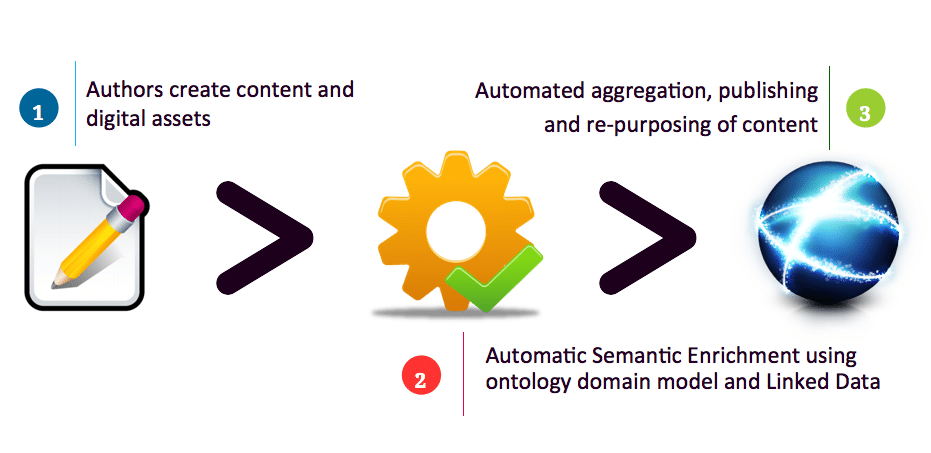Publishing made more powerful than just Web Content Management
Technical innovation has sparked significant social change in the publishing industry and we now live in an era where information is available in abundance. Information is growing at an exponential rate and a massive portion of 80% of this information is unstructured and unusable to a large extent.
However, this information must be consumed and this often happens via modern electronic devices, tablets and smart phones, which help people to stay up to date.
In my perspective, the challenge is for publishing companies to flow with modern technology, keeping their content interactive and updated first and fast, as and when events happen. In empathy, that is what we require as informative readers, knowledge digesters and inquisitive news consumers. In fact, for news organisations, breaking a news item to your audience in seconds faster than your competition on the World Wide Web holds a massive competitive edge.
But how do you ensure your technology strategy is streamlined to your dynamic business requirements and speed to market? I will bring about a well-known practice from British Broadcasting Corporation (BBC). BBC is improving their infrastructure and services around BBC Sports and 2012 Olympics sites using a fully dynamic semantic publishing (DSP) architecture (a term coined by them), to improve user experiences and generate high levels of user engagement.
If you are familiar with the concept of Business Intelligence (BI) in data warehousing, DSP is easier to understand as it revolves around the same ontology concepts. Business giants like Unilever and British Petroleum use BI applications to streamline reporting and warehousing. Thousands of users across geographical locations retrieve reports using simple software that helps them slice and dice the information extracted from the database. In the middle, sits the data warehouse, which defines relationships between organisation’s entities and master data to form a slick ontology. This gives intelligence to the transactional content extracted as a cube to be sliced, diced and displayed to the users.
So among smart corporate systems, DSP is equivalent to BI, but specific to information oriented organisations in the publishing industry like news organisations and academic publishing bodies. The slow uptake of DSP technology in information oriented or rather publishing organisations demonstrate that not everyone can build their own DSP platforms to support commercial level publishing. Let’s see the level of detail in this type of publishing. In the modern way of publishing, an author creates the content, should it be text, images or videos, each item has to be stored separately in the content store. In the case of publishing this as a sports item (categorisation), individual content items need to be collated, organised in a pleasant presentation layout and published in the sports section on all channels. So publishers usually separate content from the presentation layout to manage content and improve flexibility. But, the meaning of content is lost in this process between classification of content and dynamic delivery.
Zaizi’s Dynamic Semantic Publishing (DSP) Solution
We developed our DSP to offer a smarter experience with three independent components that interact with each successive component in publishing, as illustrated below:

We use Crafter, Alfresco and Redlink to deliver our dynamic semantic publishing platform. Crafter is an open source web experience management system, which is built on top of Alfresco, a leading open source ECM platform facilitating web content management for publishing. All the authored content is pushed into Redlink’s semantic platform. This lets you configure your own ontology model. It then enriches your content against that ontology model and pushes it out to a search engine with all enriched semantic information.
The underlying mechanism processes natural language to machine-readable format, structuring knowledge and linking 3rd party data to bring out the meaning of your related content. So simply, when you publish your content, the article will automatically point to all related content using linked data.
On the front end, you can use the Crafter software to be able to query the data in Redlink, and to serve up content, we use Crafter to build multichannel publishing with personalisation and content targeting. Compared to Alfresco alone, the Redlink and Crafter integration gives an edge in usability, easy to use interfaces, and rich experiences for online audiences. These technologies are immensely scalable and can be delivered as a cloud platform. The aim of this ontology based linked data solution is to unlock all the constraints in deriving the meaning of content. From an orgnisation’s perspective, the following benefits can be derived:
- Maximise value of your content, enhanced navigation, content re-use and re-purposing. Publish to various channels.
- Improve your SEO ranking, increase the chances of consumers finding your website.
- Link your content to your products; tag your content with your product catalogue.
- Provide an immersive content experience, because it links and pulls out your corporate web content
Powerful than keyword search
Our linked data platform is more powerful than normal keyword search. It gives your organisation a competitive advantage of searching for the exact meaning with semantic navigation and search capabilities on websites.
Rich online experiences
With Crafter CMS, your customers immerse in a content rich online experience. This improves customer engagement rates to help create product impressions and improve your sales.
Economies of scale
Rather than implementing your own dynamic semantic publishing platform, it is more cost-effective to facilitate meta-data tagging with the originators, our Redlink partners. They are pioneers in semantic technologies and you will benefit from linking to online content and 3rd party content.
Smooth publishing
The dynamic semantic publishing platform shall improve speed-to-market with automatic mechanisms to publish your content, facilitated by Crafter. Scalability of the solution to growing content needs helps organisations fit the solution into their strategic roadmap
By Lakshika Paiva
Latest content
-

The great legacy escape: Ditch the spreadsheets, drop the paper
Published on: 4 June, 2025 -

The great legacy escape: How outdated systems and processes still hold government back
Published on: 29 May, 2025 -

GDS’s research into AI in government – and how to deliver real value
Published on: 1 May, 2025 -

From ScanApp to Lego demos — What you need to know about Security & Policing 2025
Published on: 1 April, 2025
